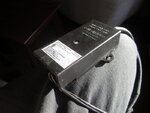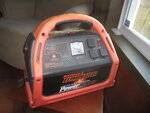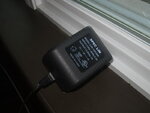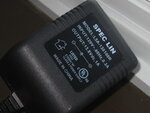David Zeno
Newbie level 6
Hello,
I have a transformer that was used to power some outdoor Xmas LEDs in some icicles.
The transformer is rated at 12 volts DC output, 10 Watts output.
On the INPUT rating, it says .23 amps / 120 volts ( yes, that's point-23 of an amp ), not sure if this has any bearing on output,
I'm guessing not.
However, there is nothing marked for the AMPS the transformer puts out. Is there a way of figuring this out ?
I have a voltmeter but don't know what to do, in order to figure it out.
Thanks for any help.
I have a transformer that was used to power some outdoor Xmas LEDs in some icicles.
The transformer is rated at 12 volts DC output, 10 Watts output.
On the INPUT rating, it says .23 amps / 120 volts ( yes, that's point-23 of an amp ), not sure if this has any bearing on output,
I'm guessing not.
However, there is nothing marked for the AMPS the transformer puts out. Is there a way of figuring this out ?
I have a voltmeter but don't know what to do, in order to figure it out.
Thanks for any help.




